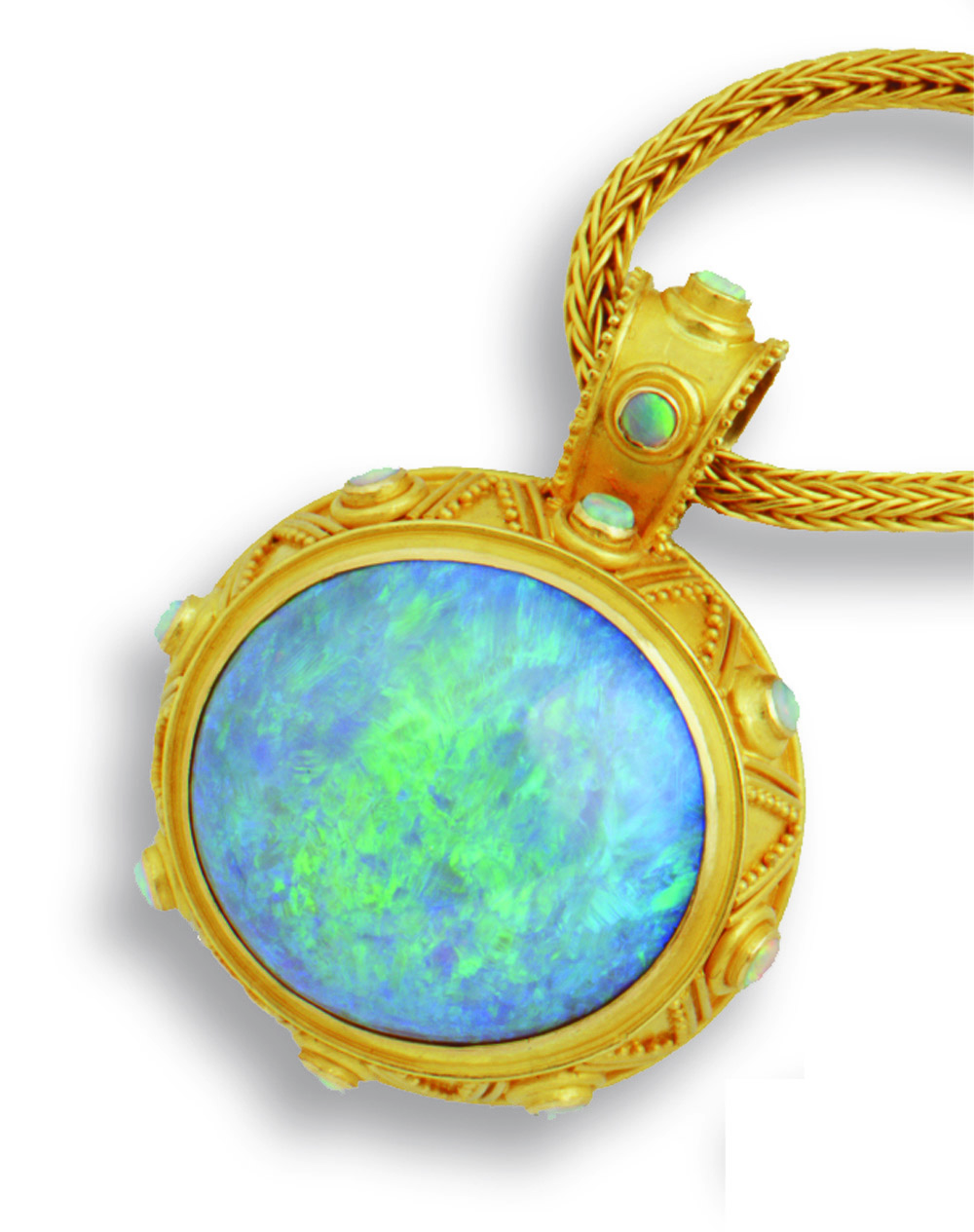For the last post in this model photography series, I’m turning my unforgiving lens on my own middle-aged self (gulp). When it comes to shooting jewelry on the body, some would say leave it to the youngsters or leave it to the pros. Judging from the images we’re bombarded with at every turn, a woman should never attempt the jewelry selfie after age 40.
Trust me, it’s easier to get a good image of jewelry on a younger woman. But I don’t always have one handy, and sometimes I feel like… I don’t know, maybe we need a little reality? After all, it’s women my age who buy and wear much of the jewelry I show on this site. Is there not a way to find the beauty in my own demographic – or even my mother’s?
A few years ago, I began shooting jewelry on my hand. There were pieces that begged to be shown in context. I’ve been shooting jewelry on this hand since 2006 when I reported on a famous Christie’s auction. Here is an unretouched, unfiltered example from my Instagram a couple years ago. I’ve posted so many shots of this hand since then, I should start a #mylefthand hashtag. My right hand holds the phone.
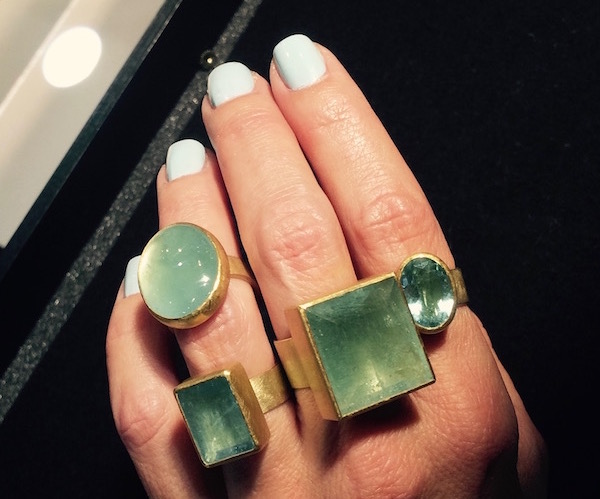
Yup, after years of lugging around a Nikon and then a Canon Rebel, I’ve been shooting these with my iPhone and sometimes a little clip-on macro lens. The multi-talented Monica Stephenson of idazzle turned me onto that gadget at a World Gold Council conference one year. Be warned: it will not only show every inclusion in the stone and brush stroke on the metal but every pore and crease on your hand as well.
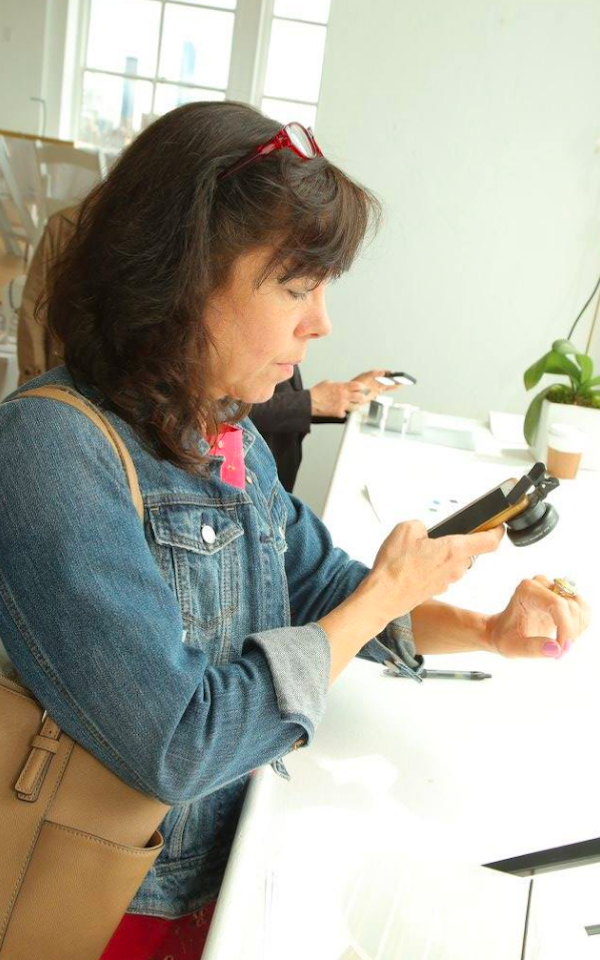
Now that’s what I really look like most of the time: scowling in concentration at a screen of some sort. This shot was taken at the AGTA Spectrum Awards press preview last year. That’s the little clip-on lens I mentioned. My oh-so-professional photography setup these days? You’re looking at it. Total cost (minus iPhone): $35.
I drew the line at photographing my hand until a couple years ago at the Couture show. I’d been trying on jewelry then photographing it on the 20something women who work those booths, until someone offered to take it on me. A couple of those shots turned out surprisingly well. (A good sales assistant these days not only knows the inventory but also how to style a shot, work a smart phone, and shoot for the Instagram crowd.) I posted one from the show floor and it got a warm response.
Here’s one taken by a male sales staffer at Todd Reed’s booth at that show. Since I couldn’t ask him to model these jewels for me, I handed him my phone, and sat on a stool.
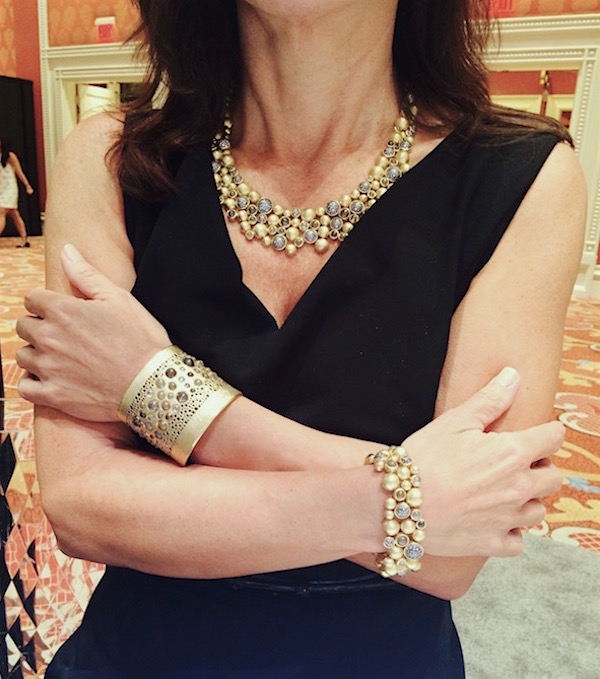
Granted, that is an amazing collection and most people were “liking” the jewelry itself. But I believe a large part of the success of Todd’s work is that it looks as good on the female body as it does in the case. And, y’know, that is what it was designed for: to be worn by a living, breathing, non-airbrushed female. To me, that is the true test of a piece of jewelry.
I used a filter on that shot to bleach out the shadows. See that brown patch on my hand? I was in such deep shadow, it looked like a birthmark in the original. Trade show lighting is wicked. (My advice if you find yourself shooting indoors under track lights: back up a bit and get out of the spotlight.) The right filters do wonders to even out skin tone without erasing all detail. I hate that fake blurred effect left by overuse of the eraser tool. I like that you can still see my freckles and the texture of my skin. My goal is to show jewelry not in the photoshopped perfection of a magazine ad but the way it looks on a real, live woman.
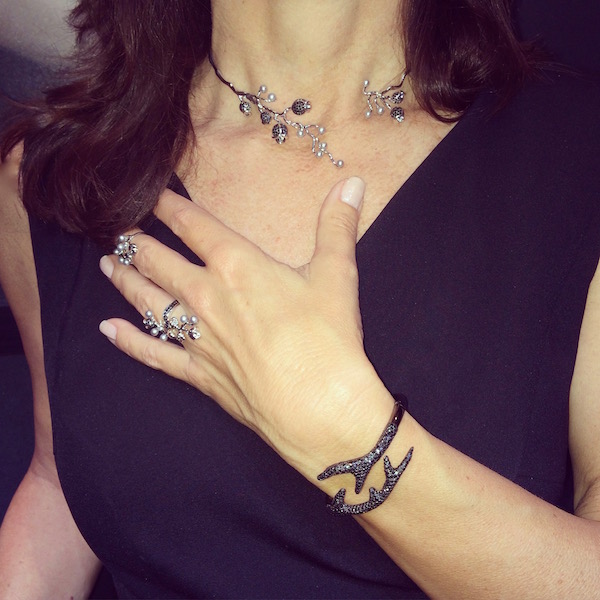
This image of me wearing jewelry by Colette was taken by the playful sales staff who work that designer’s booth. It too was filtered and cropped but not retouched. It takes a few shots to get one I can use, but guess what? It always takes a few, even when you’re photographing flawless youth. A good assistant knows to keep shooting. A really good one adjusts your hair a bit and suggests you move your hand up or down slightly or shift your body to the left, out of the shadow.
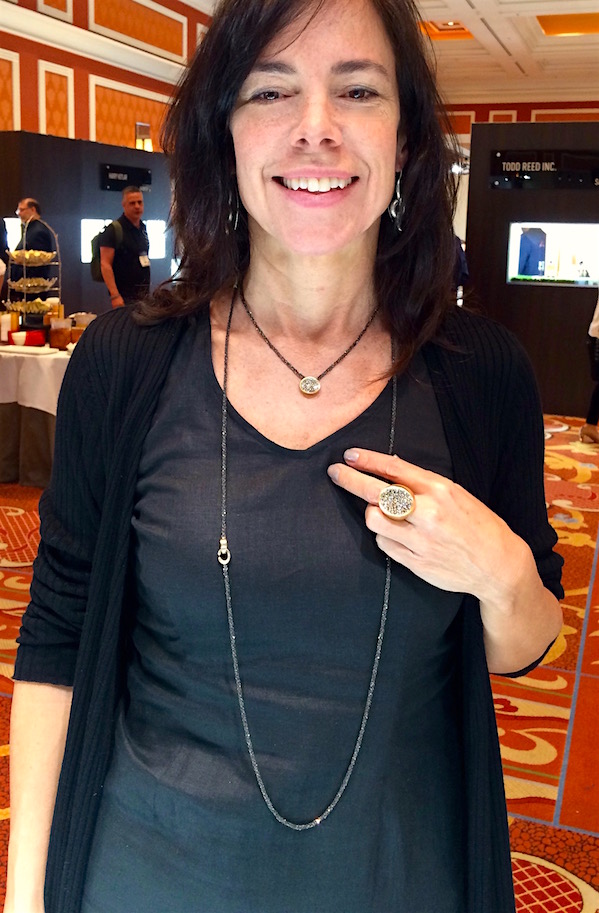
Here’s a shot of me from Couture 2017 wearing a new black-diamond collection by Antonini of Milano (with my own earrings by Shana Kroiz). At the time, I posted this with a joke about how beautiful jewelry can light me up even after being up all night on a red-eye flight. My eyes were glazed but the smile was real. People responded to the jewelry – and this particular jewelry was made to be worn, with a simple linen dress like I was wearing.
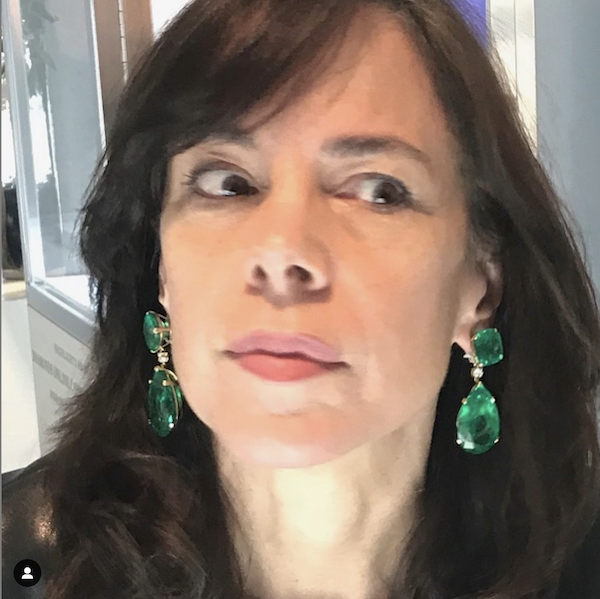
And here’s another example of handing my phone over to the nice lady behind the counter, this time at a Sotheby’s auction preview. I later cropped this image way down, from an original that showed my whole body and the room behind – but didn’t get close enough to the jewels. My goal was to show the shape of those enormous emeralds and the mount designed by Verdura. This photo was not retouched in any way but for some reason, the crop shows the earrings in detail but goes easy on my face – win, win!
If you’re shooting jewelry, keep the focus on the jewelry, even in the photo editing stage. If you have to, crop radically. Often you lose detail this way, but if you get lucky – or the shooter is careful – the focus is tighter on the jewels than the face.
Now I want to address another kind of self portrait most of us have to produce at some point: the professional head shot. If you look at the upper left corner of this site, you’ll see my most recent. I paid a pro and it took many shutter clicks to get a usable image. I’m not real comfortable in front of a camera and she kept saying, “Big smile!” Some people smile beautifully on demand. Me, not so much.
Nevertheless, she ended up with some great images I could never have produced on my own. I recommend springing for a pro, if you can. That shoot cost $350, including a stylist who did hair and makeup. I’ve paid half that for quickie head shots at conferences, where you can get in on a group rate. The speed-shoot on the sidewalk with a handheld reflector works fine for me. Studios make me nervous.
But sometimes you just don’t have time or cash for a professional shoot, in which case… you can do it yourself. I produced my own head shots for years. As a busy magazine freelancer, I had to provide 300dpi (print quality) images at a moment’s notice whenever an editor needed to fill their contributors page. At first, I relied on one I’d paid for at a photographer’s studio, but it looked like a mug shot you’d use for a passport. I needed images that could run large and made you want to turn to my story – the one my bio was referring to. So I started taking them myself to fit the subject matter I was writing about.
I shot my first headshots against the stucco wall of my balcony with my Canon Rebel set up on a tripod. I was facing the late afternoon sun on an overcast day. A remote would have made my job easier and they’re available cheap now but I didn’t have one then. I would focus my camera on the wall, set the self timer, and run madly around to sit facing the lens, trying to look casual. Not ideal!
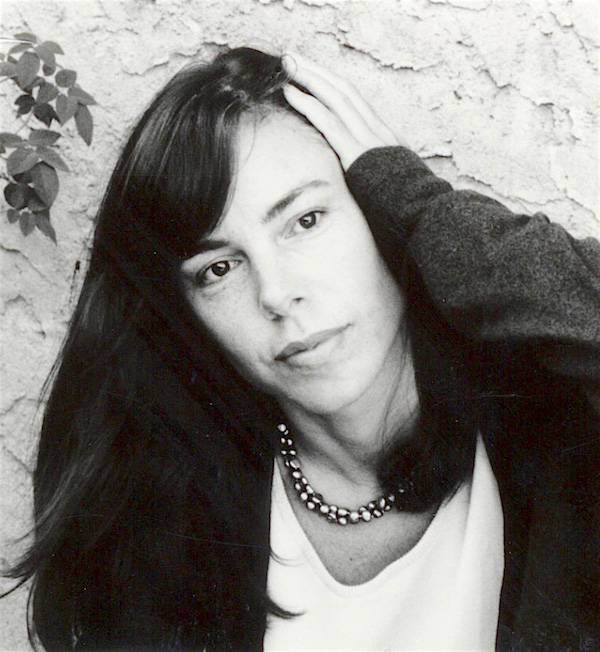 If I’d known my hand would end up in the shot I’d have put a ring on it. A gust of wind blew my hair in my face just before the shutter clicked and I kinda liked the result. I remember the designer I profiled in the issue of Art & Antiques where this head shot first appeared sent me a message raving about it. I thought, wow, maybe I really can pull this off. You can see the difference in quality between this and the professional shot on my About page, but it’s not bad.
If I’d known my hand would end up in the shot I’d have put a ring on it. A gust of wind blew my hair in my face just before the shutter clicked and I kinda liked the result. I remember the designer I profiled in the issue of Art & Antiques where this head shot first appeared sent me a message raving about it. I thought, wow, maybe I really can pull this off. You can see the difference in quality between this and the professional shot on my About page, but it’s not bad.
If you have to rely on one head shot for everything – your website, bios, social media – consider investing in a good one. But if you need to produce them on an ongoing basis and know your way around a camera, experiment a little.
My flesh is more textured than it once was and carries souvenirs from various mishaps and decades in the wind and sun. I’m well-traveled and I’ve had my share of sleepless nights. My hands have worked hard, soaked in darkroom chemicals, dug up a dozen gardens. Mostly, I’m just getting older, like everyone else lucky enough to stick around a while.
But I’d like to think I have a different kind of beauty now, just as you do. It’s a little harder to photograph but I’m learning and, fortunately, I know my way around basic photo-editing tools. I’ve been touching up images for decades. With the tools that come bundled on your computer or mobile device, you can easily crop and sharpen and saturate. Worse comes to worse, there are these things called “filters.”
Where jewelry is concerned, good product shots are crucial. But for the same reason I’m always harping on about wearability, I believe there is something lacking when you rely solely on product shots. They present jewelry as an object to be admired in the abstract. But jewelry is not something we hang on the wall or put on a pedestal. We hang it from our necks, ears and wrists, pin it to our lapels and stack it on our fingers. And by “we,” I don’t mean just flawless 25-year-olds.
If I can pull this off, so can you.
© 2018 The Jewelry Loupe. All rights reserved.
This page contains affiliate links.
My equipment:
Like what you see? Subscribe to The Jewelry Loupe to receive more posts like this.
Delivered by FeedBurner


